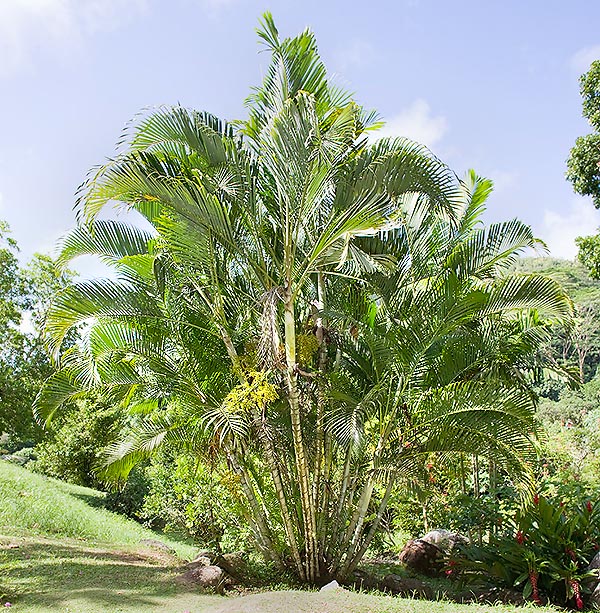Family : Arecaceae

Text © Pietro Puccio

English translation by Mario Beltramini

Cespitose with 12 m tall and 10 cm broad trunks © Giuseppe Mazza
The etymology of the genus is not known; the species is honoured to the owner of the garden, in Cuba, where the palm has been located and described as a new plant.
It is commonly known as “cabada palm”.
Cespitose palm with unarmed stems tall up to 12 m and diameter up to 10 cm, of glossy green colour and on which are visible the rings, traces of the junction of the fallen-off leaves. The foliar base, which wraps completely the stem for a height of about 80 cm, is of pale green colour with a bluish waxy patina. The pinnate leaves of glossy dark green colour, initially ascending and arched in the terminal part, are almost 2 m long, with leaflets long up to 60 cm in the median part and regularly inserted on the rachis to form a V.
Monoecious plant, it produces an inflorescence erect and ramified between the leaves, long about 1,5 m, carrying flowers of both sexes, disposed in the characteristic triad (a female flower between two male ones); ovoid fruits about 1 cm long, of red
colour when ripe. It reproduces by division and by seed, which germinates in about 2 months.
It is a palm still not much cultivated, suitable for tropical and subtropical climates; the cultivation in warm temperate climate can be tried in particularly sheltered position, as it resists only for short periods to temperatures around zero.
Synonyms: Chrysalidocarpus cabadae H. E. Moore (1962).
→ For general notions about ARECACEAE please click here.
